Agriculture in Somalia is a very important but underdeveloped sector. We interviewed a Somali farmer, Mohamed, to learn more about how we can produce our own food in Somalia rather than importing it and the current challenges farmers are facing. We hope you will enjoy reading!
Background
The agricultural sector has historically played a crucial role in Somalia’s economy. Today the agricultural sector in Somalia contributes to 70% of the country’s GDP and employs 80% of the Somali population. In addition, it accounts for 50% of all exports (African Union). During Italian colonization in the 1920s, areas in southern Somalia along the rivers were brought under controlled irrigation, where mainly cotton and banana were cultivated.
After independence, Somalia aimed to boost its agricultural sector and achieve self-sufficiency, notably through the Five-Year Development Plan from 1974 to 1979. The core of the plan was to establish a public investment programme strengthening beneficial sectors like agriculture. The government planned to be self-sufficient by 1980. Although the focus shifted towards industrialization, the efforts such as forming agricultural cooperatives and expanding irrigation systems were notable (World Bank – Somali Country Economic Memorandum, Guha-Sapir 2009, World bank ).
Ongoing conflicts and recurrent droughts have significantly impacted agricultural productivity over the past 30 years. Since the civil war began in 1991, well-established irrigation systems in the Shabelle and Juba river basins were destroyed, leading to a breakdown in agricultural infrastructure and displacement of large populations. This increased food imports and aid dependence as seen the case during the severe drought of 2017 where humanitarian aid played a crucial role in improving food-security.
Despite these challenges like the break-down of the major irrigation systems, the unfavorable climatic conditions and ongoing conflict, there is hope and potential for the agricultural sector.
Currently agriculture is mainly concentrated in the southern regions, where the ground is more fertile and irrigation can be achieved from the Jubba and Shabelle rivers. To the drier North, many new farms are also being established. Somalia is currently producing a large variety of crops including coarse grains, pulses, oil seeds, fruits, and vegetables. These circumstances lead to great opportunities for the young but we are still far from reaching our potential. Security issues and lack of education are significant barriers to realizing this potential.
One of Somalia’s most prominent agricultural figures is Mohamed Muse Hassan. We had an interview with Mohamed to understand the potentials and challenges of agriculture of Somalia.
Interview with Mohamed
MoreSomalia: Thank you for taking the time to speak with us today. Could you please introduce yourself and tell us a bit about your background in farming?
Mohamed: “My name is Mohamed, I live in Mogadishu and I am a Somali farmer. I come from a family who are traditionally farmers near Afgooye, and after seeing some of the issues they were facing I decided to study farming. I took a bachelor in agricaltural science, and afterwards a masters degree in agribusiness. Then, in 2022, I founded my company “Hecter Agri Tech”.
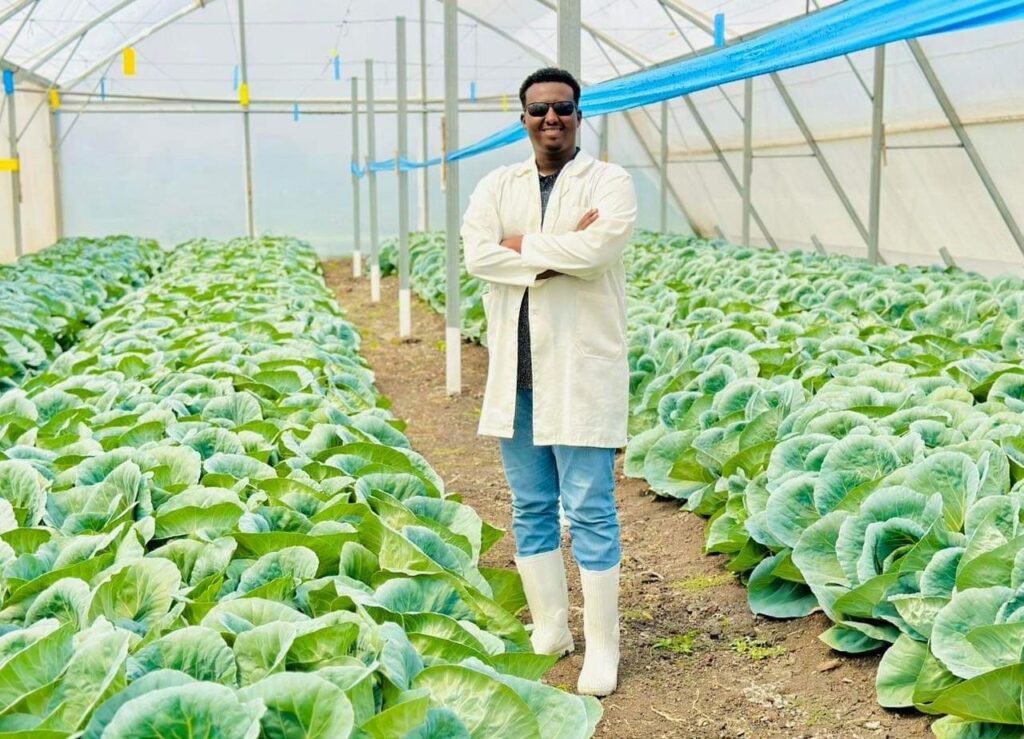
MoreSomalia: Tell us a little bit about your company:
Mohamed: “We do consulting, have our own farms, and run a store:
- We consult Somali farmers in transitioning from traditional agricultural technologies to modern technologies. We have introduced soil testing facilities and inform farmers before they plant anything what crops work best for their land, including the right humidity, temperature, and moisture of the soil. We also provide them with good quality seeds that are used all over the world. Now we also equipped them with tools where they can follow the automated watering system from their phones.
- Besides consulting farmers we also farm ourselves and we supply to the markets two times a week fresh produce. We have three farms: one in Afgooye, one in Balcad and one in Daynile. Every week we produce two tonnes of vegetables like tomatoes, cucumbers, pepper, and spinach. Since we can’t distribute ourselves we use brokers who buy from us and they distribute the produce in the markets.
- The 3rd branch of the company is the shop in Daynile where we sell agricultural equipment to farmers.”
MoreSomalia: How many employees do you have?
Mohamed: “In total there are 21 people working at Hecter Group. On the vegetable farm 7 people work and on the fruits farm we have 3 employees. On the fodder production farm we have 3 people working. In the agricultural shop we have 4 workers, and in our office we have 3 workers.“
MoreSomalia: Which crops do you produce and how big are your farms?
Mohamed: “We produce around 20 different crops in our farms. The fodder farm is 8 hectare, fruits farm is 3 hectare, and the vegetable farm is 21 hectares where we use 2 hectares for a seedling nursery. We initially got the seeds for the fodder from a company in Nairobi. We also have a contact in Turkiye who is our biggest supplier. Regarding water, for the farm in Afgooy we use canals from the river for irrigation and for the other farms we use groundwater.
By producing the crops locally, we are able to meet a big part of the demand. Not so long ago most of the fresh produce was imported. There is a great demand for fresh produce and through our work we reduced the demand for imported produce. Today 60% of the tomatoes consumed in Somalia are produced by Somali farmers. 100% of the cucumbers consumed in Somalia are produced by Somali farmers. The same thing for pepper. We are able to supply the demand to a large proportion.“
Despite this, the agriculture sector is still largely underdeveloped in Somalia. Currently, Somalia’s biggest import commodity is “FOOD” and this is an issue, since relying on imports will make the country vulnerable. Generally it is more expensive to import food due to the large transportation costs, taxes, fluctuations in exchange rates and global issues affecting the supply chain.
Relying so heavily on importing food decreases Somalia’s food security. Check out the interactive Fluorish chart to see the imports to Somalia.
MoreSomalia: Let’s talk about consulting, given that northern Somalia is very dry, do you consult exclusively southern farmers?
Mohamed: “No, our farmers are assigned to different farms all over Somalia. We help them improve their yield and we introduce the farmers to market players so that they have access to markets. Tomorrow I will do the final assessment of a fodder farm in Bosaso. Even there, they have many opportunities of irrigation and before we started the fodder production we did a trial and it worked out great. Now the farm I am consulting is independent of the fodder transported from Mogadishu and they save a lot on transport costs.“
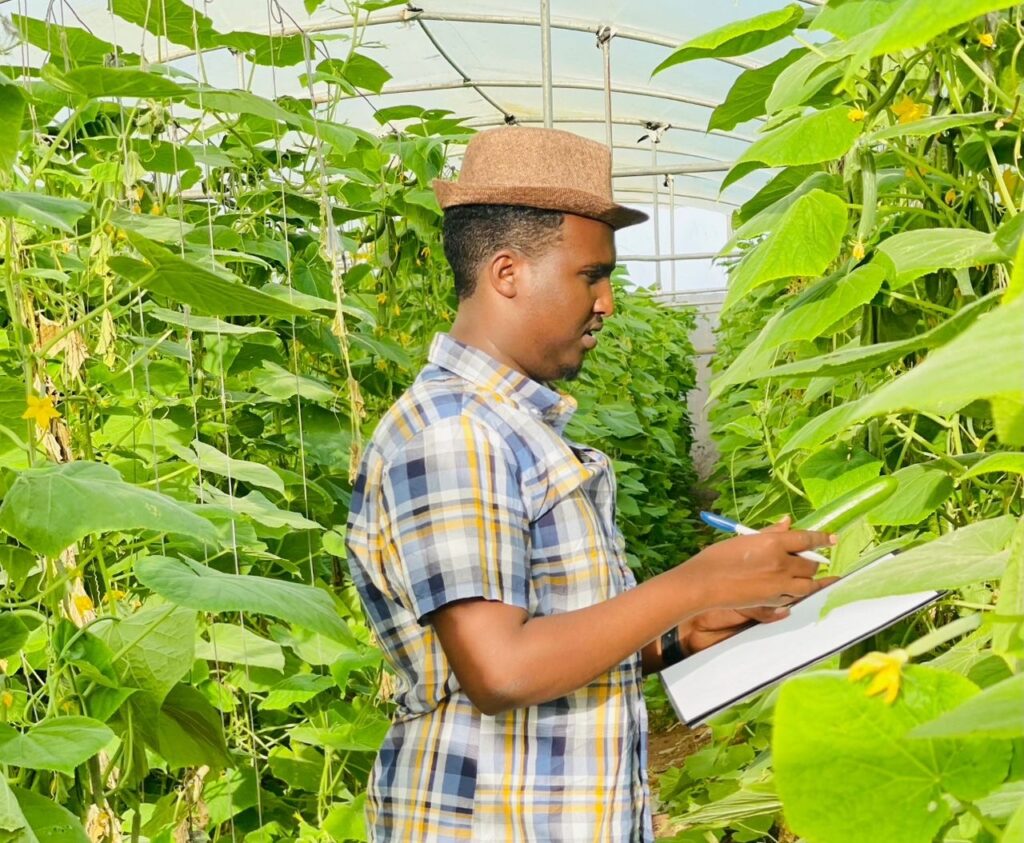
And just like that, we saw that Mohamed was in Bosaso the next day. Actually, it is not uncommon to see Mohamed in a new part of the country on a weekly basis or engaging with different people. The week before, he was presenting to the Ministry of Agriculture, and told us the government now has an open ear to farmers like himself.
Mohamed: “We have a new minister of agriculture and he invited many of us farmers and exchanged with us on the current issues. They have started to work and engage with us. We’re going soon to a conference with the Ministry of Agriculture. So it’s a great step forward” he explains.
Besides being active with his company, Mohamed is really good at using Social media to promote agriculture in Somalia and inspire the youth. With many of the youth thinking about how they might have better opportunities abroad, it is essential to present them with solutions to how they can become successful in-country.
MoreSomalia: Many say they want to enter the agricultural sector. In your view, what is the needed to start?
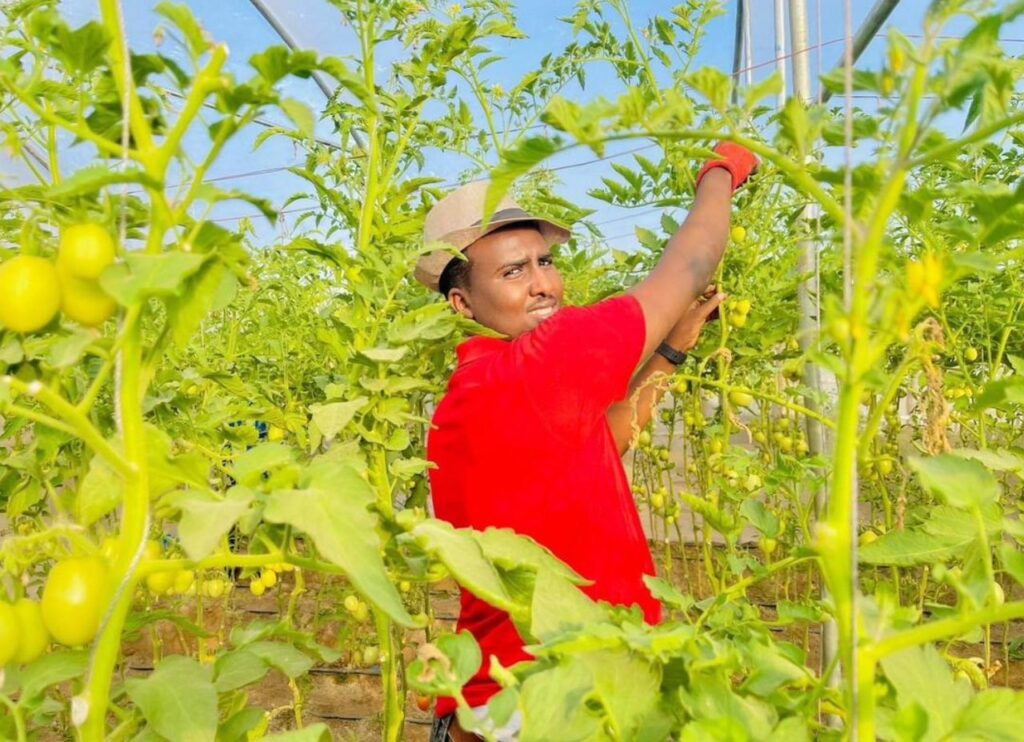
Mohamed: “First you have to have a good idea on the situation and work with an expert on the ground. Of course you also need to have some capital. We have started a seed investment of $12’000 [from USAID and UKAID]. We wouldn’t have come so far without the initial investment from them. Other youngsters would also succeed if they would get an investment like that.“
We got curious about GMOs, and Mohamed explained that GMOs are absolutely banned in Somalia, and the produce from it will be burned. “Our soils are very fertile and we don’t need them” he continues.
MoreSomalia: What are the biggest challenges for farmers in Somalia?
Mohamed: “The biggest challenge is the infrastructure which is bad. There are some security issues. Some of the check-points are also a challenge.“
The checkpoints – Isbaaroland
After the interview, we explore the checkpoints, also known as isbaaro. Back in October 2023, the first comprehensive map of Somalia’s checkpoints was made alongside with a report called “Paying the price”. Most of the checkpoints are government owned, but 20-25% are actually operated by Al-shabaab. Some are also owned by clan militias. The checkpoints are concentrated surrounding the capital and in South Somalia. And they are very bad for the Somali economy. They inflate the price of locally produced goods, extracting wealth from the vulnerable population. E.g. the checkpoints increase the price of bananas by 30%. They are also a magnet for violence.
Explore the checkpoints in this interactive map. This was created as part of the report “Paying the Price”.
The banana trade and checkpoints
In the past, banana exports were crucial to the Somali economy, making up a fifth of the economy until the 1990s. However, the onset of civil war disrupted this industry. The banana trade became a significant point of conflict among clan-based militias. The fertile regions around the Shebelle and Juba rivers, central to banana plantations, remain contested areas. Despite the ongoing conflict and recurring droughts, these regions still manage to supply bananas and other fruits to Mogadishu and other areas, as well as export lemons and sesame seeds. Control over this land and its produce checkpoints continues to be a source of conflict between Al-Shabaab and government-allied militias, both seeking to tax the produce shipments. To learn more about the banana trade in Somalia and checkpoints, check out this interactive story.
Image gallery
After the interview, Mohamed sends us a huge collection of photos from the produce of his farms, some of which you can see below:
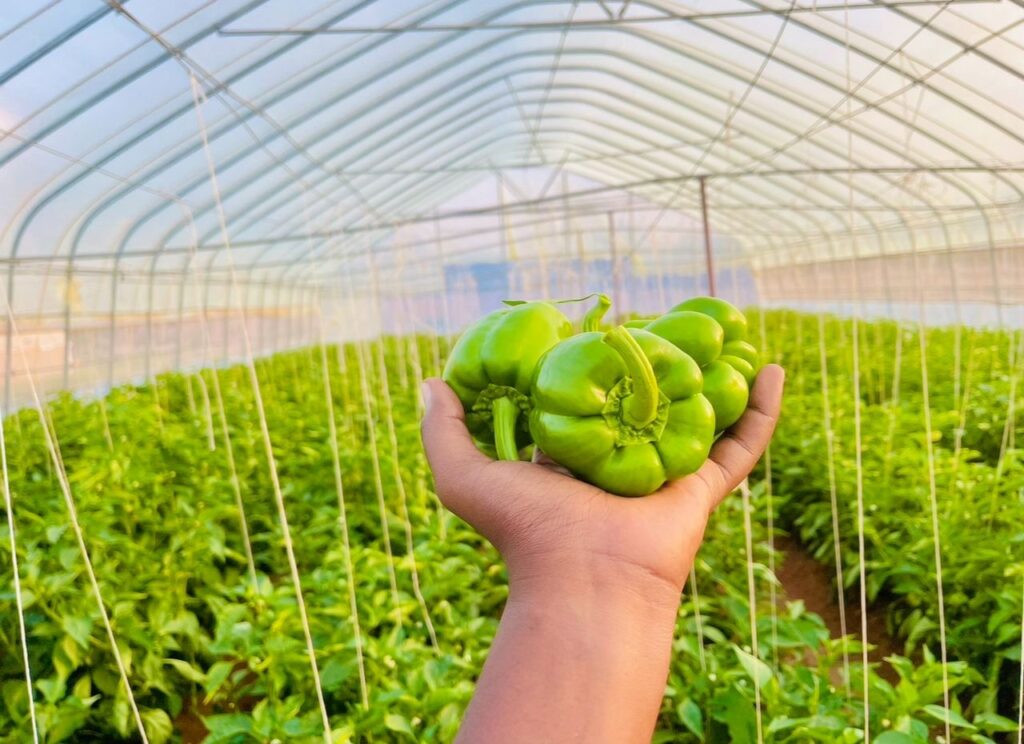
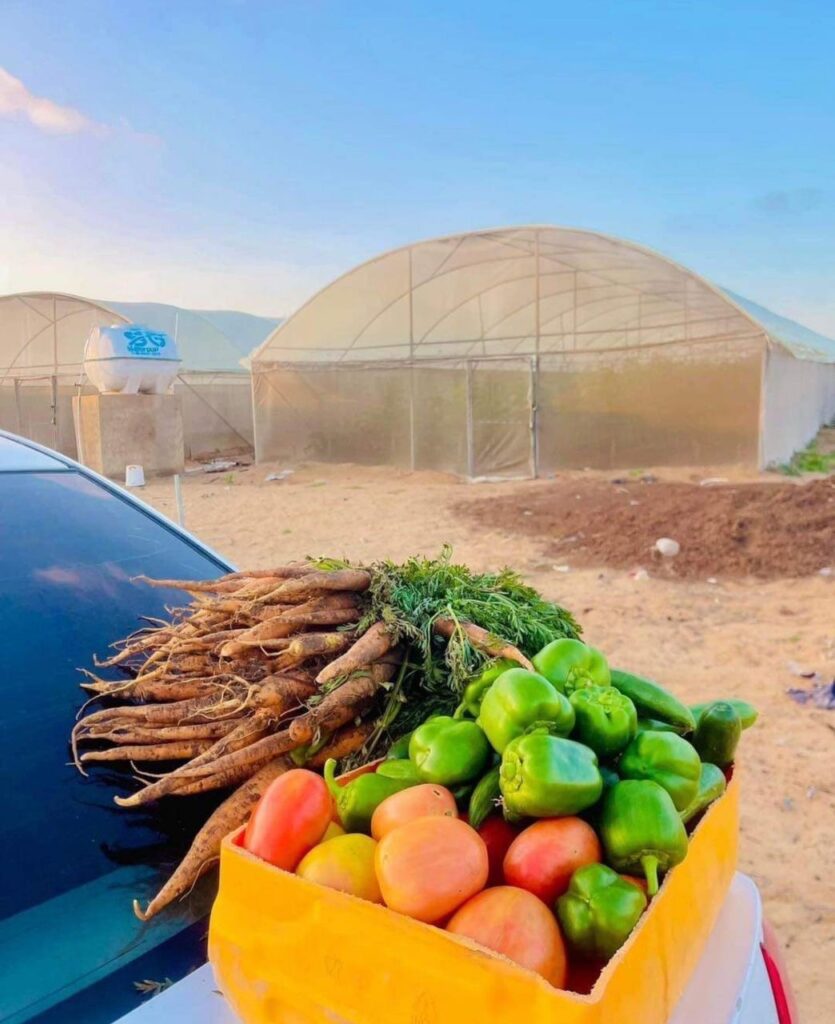
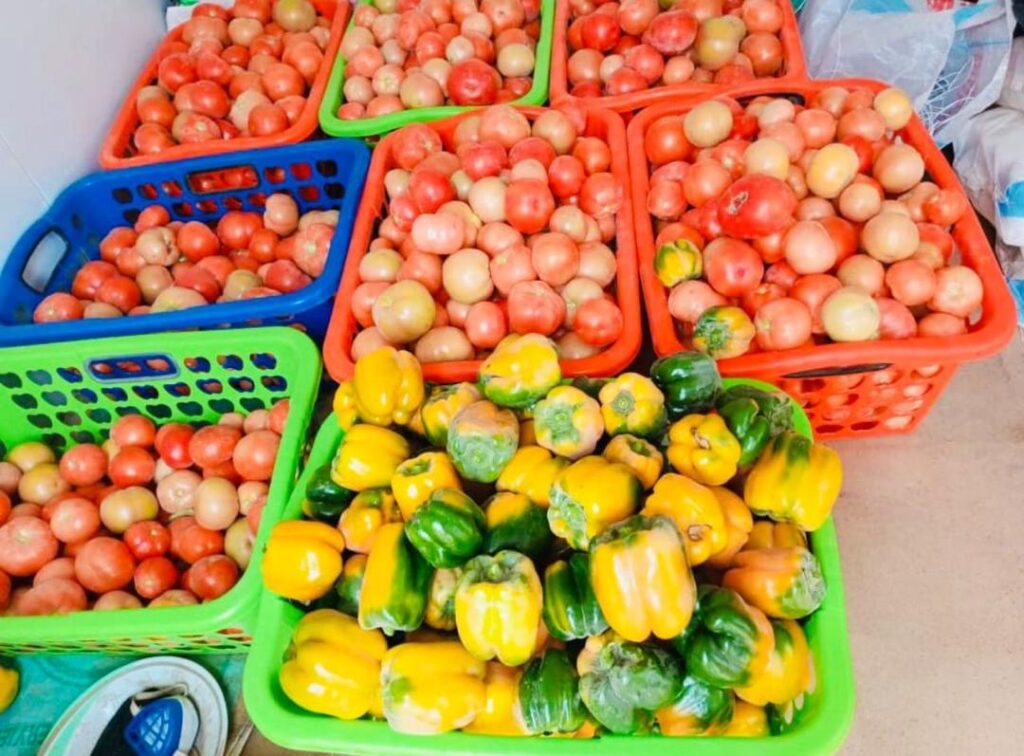
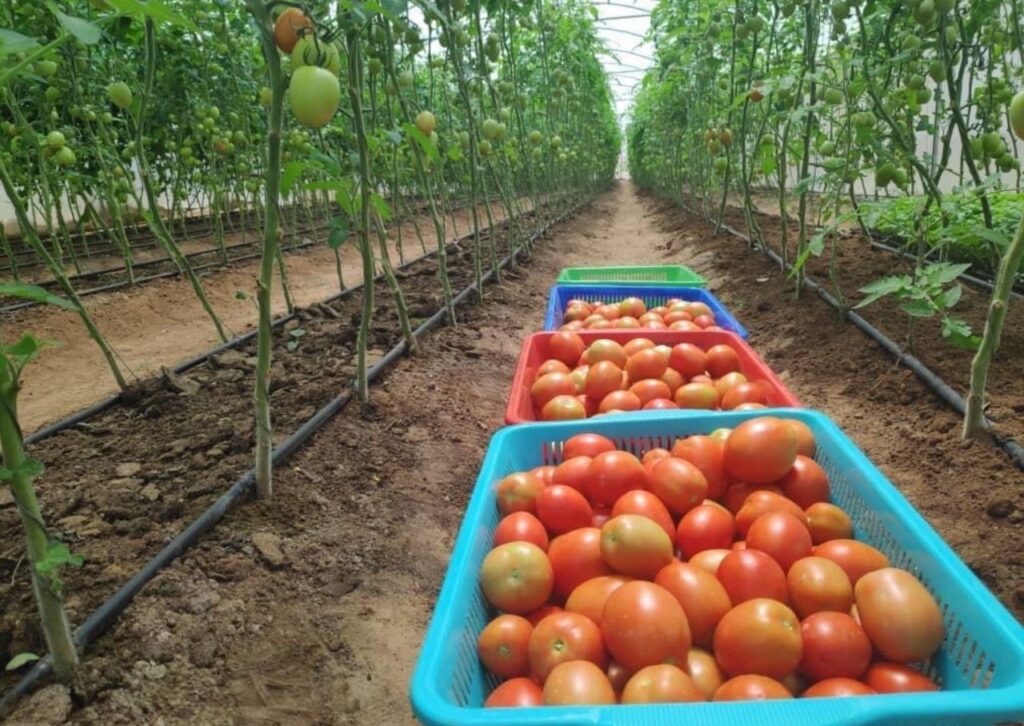
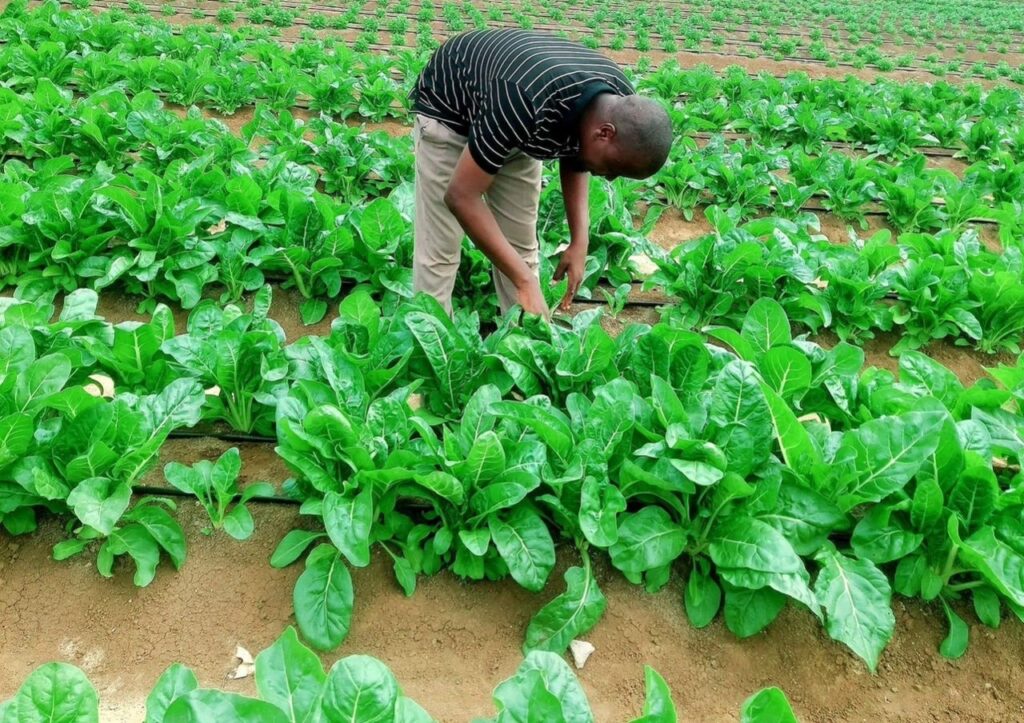
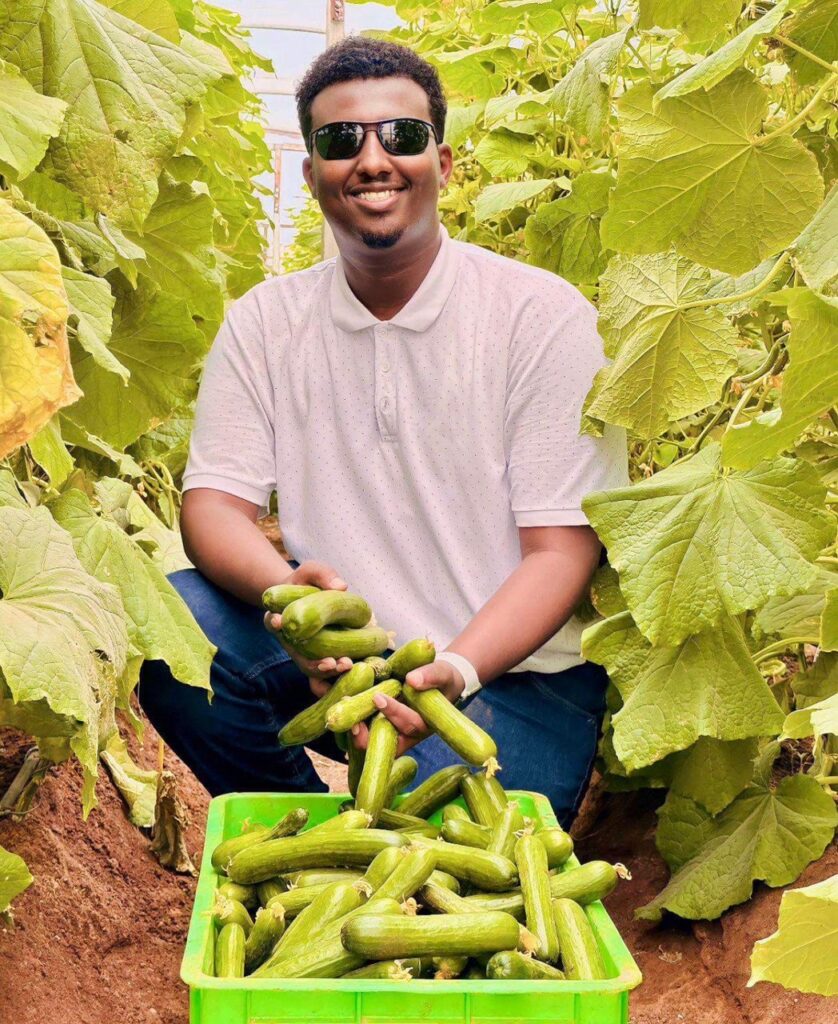
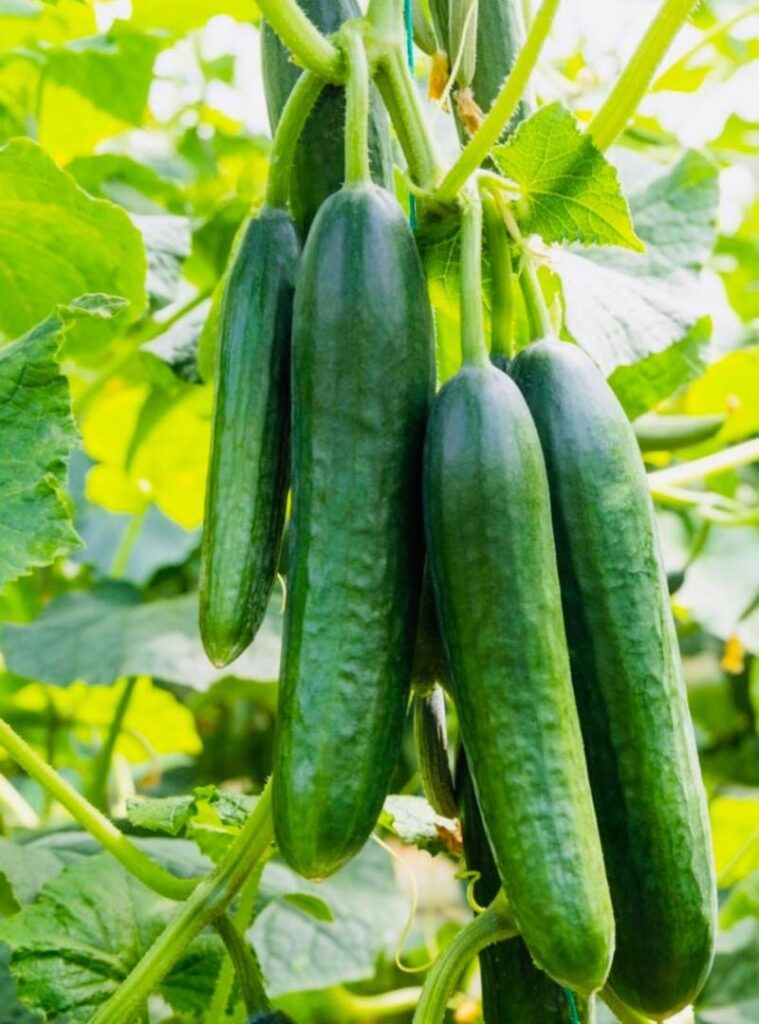
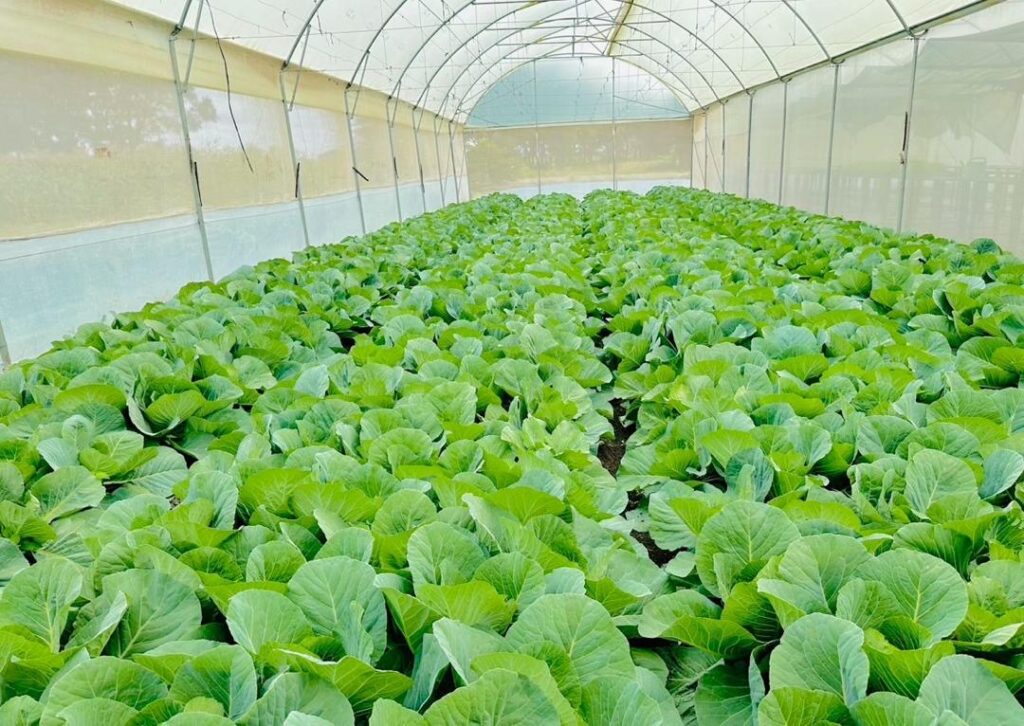
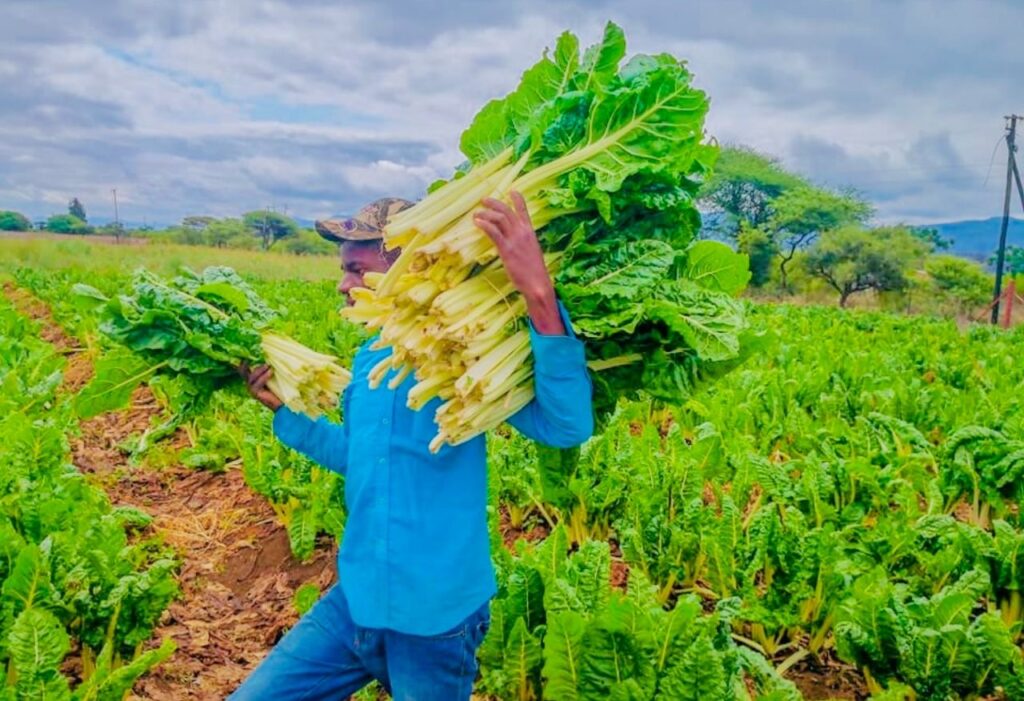
Conclusion
The agricultural industry of Somalia has always been important for Somalia. After the civil war, Somalia has been heavily dependent on import – something farmers like Mohamed want to change. Farming also creates jobs – a large part of Somalia’s youth are currently unemployed (we have some statistics on it here). With farming, Somalia can fight the droughts better, restore soil fertility with good agricultural practices, the country becomes greener, and healthy home-grown food will become more accessible to ordinary people since the importing costs will significantly reduce. The advantages are endless, and it is clear Somalia needs to invest more into farming. The advantages are endless, and it is clear, Somalia needs to invest more into the agricultural sector.
“In the last ten years we have come a long way. There was no technology in many sectors but today we have access to many technologies. Now it looks like we have a bright future. I can see where we came from and where we are going“
Mohamed Muse Hasan
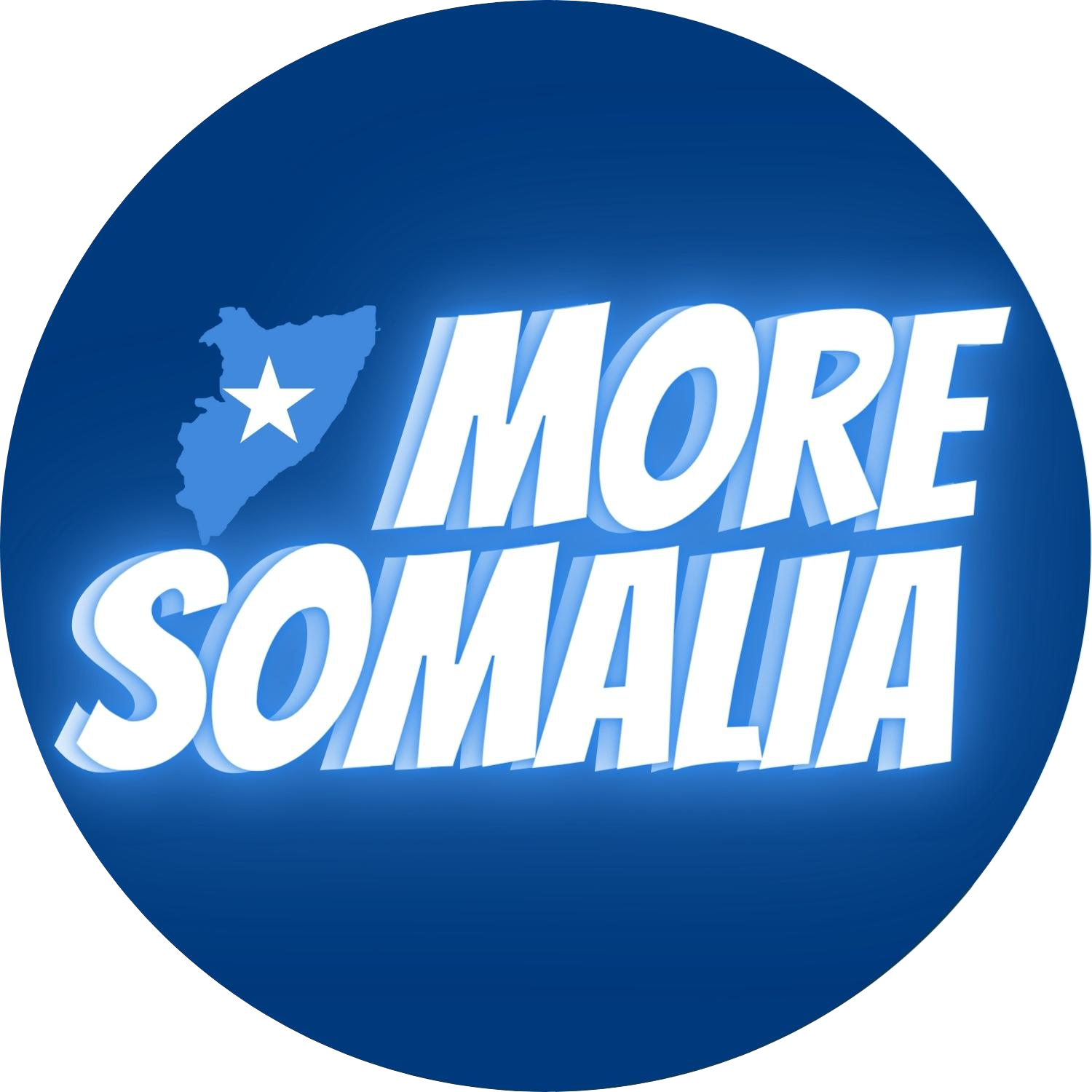
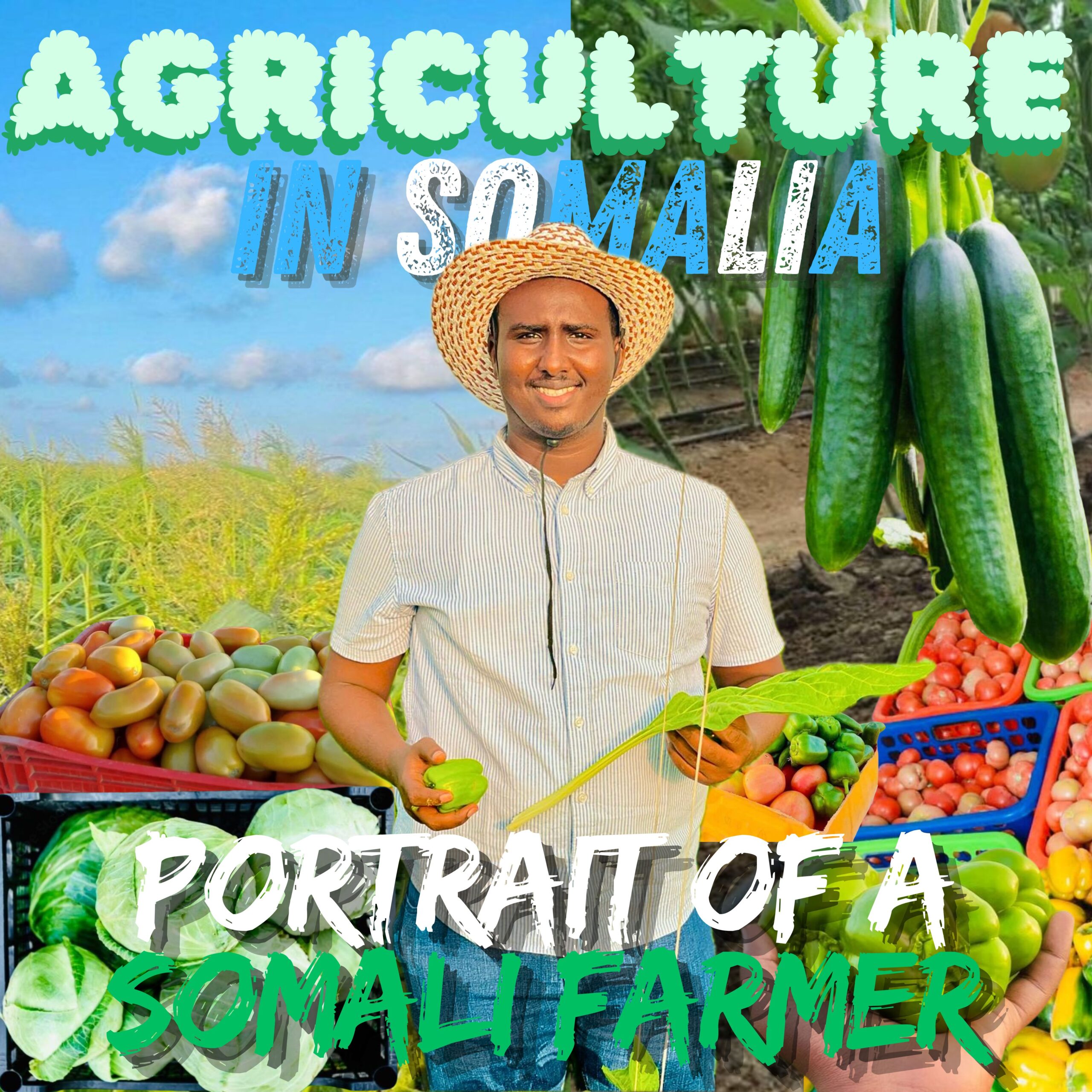

Realy I comfort the interview of farmer mohamed I say to him ” dear brother thanks you encouraged us to seed new farmers.